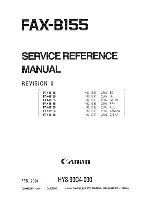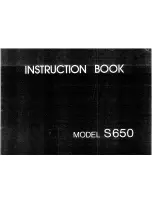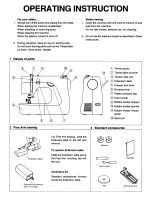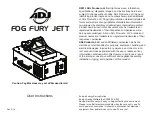
GETTING READY
———————————————————————————————————————————————————————————————————————————————————————————————————————
28
Needle types and their uses
The sewing machine needle that should be used depends on the fabric and thread thickness. Refer to the
following table when choosing the thread and needle appropriate for the fabric that you wish to sew.
Memo
●
The lower the thread number, the thicker
the thread, and the higher the needle
number, the thicker the needle.
●
Use the ball point needle when sewing on
stretch fabrics or fabrics where skipped
stitches easily occur.
●
Use a 90/14 to 100/16 needle with
transparent nylon threads, regardless of the
fabric being sewn.
●
A 75/11 needle is already installed when
the sewing machine is purchased.
Fabric Type/Application
Thread
Size of Needle
Type
Weight
Medium
weight
fabrics
Broadcloth
Cotton thread
60–80
75/11–90/14
Taffeta
Synthetic thread
Flannel,
Gabardine
Silk thread
50
Thin fabrics
Lawn
Cotton thread
60–80
65/9–75/11
Georgette
Synthetic thread
Challis, Satin
Silk thread
50
Thick
fabrics
Denim
Cotton thread
30–50
90/14–100/16
Corduroy
Synthetic thread
50–60
Tweed
Silk thread
Stretch
fabrics
Jersey
Thread for knits
50–60
Ball point needle
(golden colored)
75/11–90/14
Tricot
Easily frayed fabrics
Cotton thread
50–80
65/9–90/14
Synthetic thread
Silk thread
50
For top-stitching
Synthetic thread
50–60
90/14–100/16
Silk thread
●
The appropriate fabric, thread and needle
combinations are shown in the table above. If
the combination of the fabric, thread and
needle is not correct, particularly when
sewing thick fabrics (such as denim) with thin
needles (such as 65/9 to 75/11), the needle
may bend or break. In addition, the stitching
may be uneven or puckered or there may be
skipped stitches.
CAUTION
Содержание Innov-is 40
Страница 1: ...Operation Manual Computerized Sewing Machine GETTING READY SEWING BASICS UTILITY STITCHES APPENDIX ...
Страница 6: ...5 ...
Страница 87: ...UTILITY STITCHES 86 ...
Страница 102: ......
















































